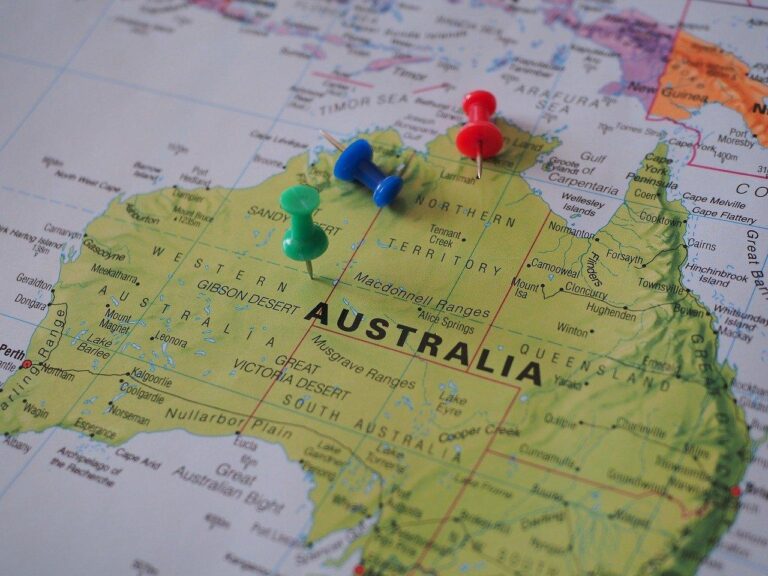Australia stands poised to challenge China’s dominant grip on the global graphite market, a critical component in the manufacture of batteries and electric vehicles. As demand for sustainable energy technologies accelerates, Australia’s abundant graphite reserves and expanding mining capabilities position the nation as a viable alternative supplier. This development could disrupt existing supply chains heavily reliant on China, reshaping the geopolitics of critical minerals. In this analysis, The Strategist examines Australia’s potential to break China’s stranglehold on graphite supply and the broader implications for global resource security.
Australia’s Strategic Opportunity to Challenge China’s Dominance in Graphite Supply
Australia stands at a pivotal crossroads to shift the geopolitical balance in the global graphite market. With vast untapped reserves rich in high-quality natural flake graphite, the nation is poised to significantly amplify its output and reduce global dependency on China’s dominance. Australia’s investment in sustainable mining technology and refining infrastructure positions it as a credible alternative supplier for burgeoning industries such as electric vehicles, renewable energy storage, and advanced battery manufacturing. This strategic advantage comes at a time when supply chain resilience and resource security have become national priorities for Western economies.
Key factors enhancing Australia’s potential include:
- Abundant reserves: Hosting some of the world’s largest graphite deposits, Australia’s resource base can meet long-term global demand.
- Proximity to key markets: Strategic location near Asia-Pacific manufacturing hubs accelerates delivery and reduces logistical costs.
- Environmental standards: Emphasis on eco-friendly extraction and processing aligns with international sustainability goals.
- Government support: Policy frameworks and incentives are driving innovation and export capabilities in critical minerals.
| Country | Graphite Production (tons/year) | Export Focus |
|---|---|---|
| Australia | 45,000 | Battery & Tech Industries |
| China | 650,000 | Global Industrial Supply |
| Brazil | 40,000 | Steel & Refractories |
Strengthening Domestic Production and Expanding Export Markets for Energy Security
Australia’s efforts to bolster its graphite production are pivotal in reducing global reliance on China, which currently dominates the supply chain. By leveraging its vast natural reserves and investing in cutting-edge mining technologies, Australia is poised to become a critical player in the critical minerals market. Strategic partnerships between government and private sectors have accelerated development projects, ensuring higher quality outputs that meet the growing demands of electric vehicle batteries and renewable energy storage solutions.
Expanding export markets is equally crucial. Australian producers are actively diversifying trade relationships, targeting regions in Europe, North America, and Southeast Asia where demand for sustainable and ethically sourced minerals is rapidly increasing. This approach not only mitigates geopolitical risks but also strengthens economic resilience. Key initiatives include:
- Trade agreements aimed at reducing tariffs and easing cross-border logistics
- Joint ventures focused on downstream processing to add value locally
- Innovation grants supporting research in enhanced refining techniques
| Aspect | Current Status | Future Target |
|---|---|---|
| Production Capacity | 100,000 tonnes/year | 250,000 tonnes/year by 2028 |
| Export Destinations | China, Japan | EU, USA, South Korea |
| Local Value Addition | 15% | 40%+ through processing hubs |
Policy Recommendations to Foster Innovation and Build Resilient Supply Chains
To reduce Australia’s dependence on China for graphite-a critical resource for EV batteries and renewable energy technologies-policymakers must prioritize investment in local mining and processing capabilities. Financial incentives such as tax breaks, grants, and low-interest loans can stimulate exploration and development of domestic graphite reserves. Additionally, establishing public-private partnerships will accelerate innovation in extraction techniques, improving the sustainability and cost-efficiency of supply chains. By fostering a regulatory environment that supports responsible mining practices, Australia can position itself as a competitive global supplier while maintaining environmental and social standards.
Building resilient supply chains also requires diversifying import sources and reinforcing strategic stockpiles to hedge against geopolitical risks. Governments should encourage collaboration between industry stakeholders and research institutions to develop advanced material processing and recycling capabilities, reducing raw material demand. The table below summarizes key policy measures and their potential impact:
| Policy Measure | Purpose | Expected Outcome |
|---|---|---|
| Investment Subsidies | Boost local mining and processing | Increased domestic supply |
| Strategic Stockpiling | Mitigate supply chain disruptions | Enhanced supply chain resilience |
| Innovation Grants | Accelerate new processing technologies | Cost and environmental efficiencies |
| International Partnerships | Diversify raw material sources | Reduced geopolitical risk |
The Way Forward
As global demand for critical minerals intensifies, Australia’s vast graphite resources offer a viable pathway to diversify and secure supply chains long dominated by China. Leveraging its geological advantages and strategic initiatives, Australia is well-positioned to challenge China’s near-monopoly on graphite, a key component in emerging technologies such as electric vehicle batteries and renewable energy storage. While obstacles remain, including investment and infrastructure development, the country’s rising profile in the graphite market signals a significant shift in the geopolitics of critical minerals. Continued focus and policy support will be crucial as Australia seeks to translate its resource potential into a stronger foothold on the global stage.




